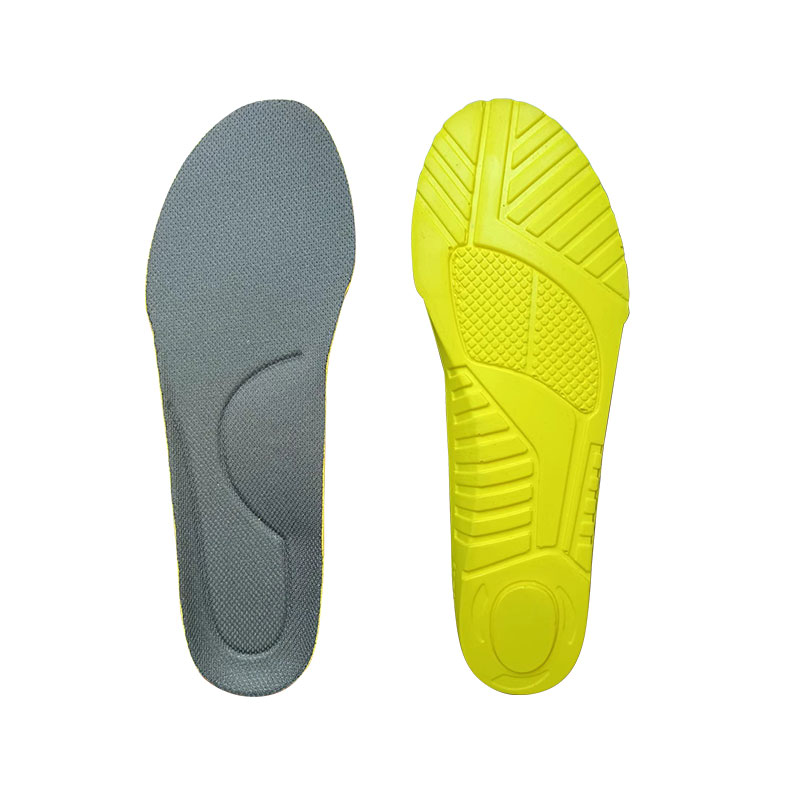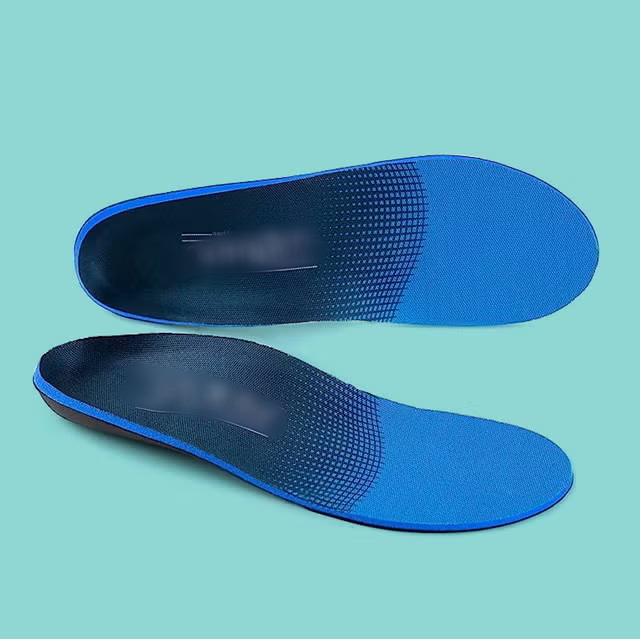Views: 222 Author: Edvo Publish Time: 2025-11-13 Origin: Site











Content Menu
>> Comfort and Cushioning Insoles
>> Orthotic and Arch Support Insoles
>> Sports and Activity-Specific Insoles
● Key Materials in Insole Construction
● Steps to Choosing the Right Insole
>> Consider Specialized Features
● Where to Buy Insoles: All Channels
>> Specialist and Medical Outlets
● OEM Insole Manufacturing Process (China Focus)
>> Benefits for Brands and Wholesalers
● Insole Technology Innovations
● Maintenance and Longevity of Insoles
>> When to Replace Your Insoles
>> Tips to Maximize Insole Life
● The Role of Insoles for Different Users
>> For Athletes
>> For Workers
>> For Seniors
>> For Children
● Exploring the Future of Insoles
● FAQ
>> 1. Where is the best place to buy shoe insoles?
>> 2. How can I pick the right insole for my feet?
>> 3. Is it possible to get branded or customized insoles?
>> 4. How should I clean and care for insoles?
>> 5. What innovations are popular in insoles today?
Finding the right shoe insoles for your shoes can transform daily comfort, combat fatigue, and address common pain issues associated with walking, work, and sports. As the footwear market globalizes, it's easier than ever for consumers—ranging from individuals to large enterprises—to purchase insoles through multiple sales channels, including online retailers, specialized stores, and OEM supplier partnerships. This comprehensive guide covers all essential points for buyers and professionals: definitions, product types, buying considerations, customization/OEM options, and after-care tips.

Shoe insoles are removable inserts designed for various shoe types. They serve crucial roles in:
- Enhancing comfort and cushioning for daily wear
- Providing support for flat or high-arched feet
- Relieving symptoms of conditions such as plantar fasciitis or heel pain
- Increasing endurance and stability for sports and work
- Absorbing impact and reducing fatigue
There are three main categories: comfort insoles, orthotic insoles, and specialty or sports insoles. The right insole can make a significant difference in your daily routine, health, and even overall posture.
These are designed for general use, focusing on soft padding and comfort. Ideal for casual or dress shoes, they're made from memory foam, gel, or EVA materials. Comfort insoles help reduce fatigue without significantly altering foot biomechanics.
Orthotic insoles are engineered to correct foot alignment issues or deliver targeted support for medical conditions. They often feature firmer materials, deeper heel cups, and pronounced arch zones. Sometimes customized through prescription, off-the-shelf models target common conditions like flat feet, high arches, or pronation.
These insoles address the needs of athletes or professionals who spend long hours on their feet. They provide impact absorption, energy return, and reduce slippage. Running, basketball, hiking, and work boot insoles all have unique structural features based on activity demands.
These target unique needs such as:
- High-heel inserts for added comfort in women's shoes
- Heat-molding insoles that adapt to your foot
- Odor-fighting insoles with antimicrobial properties
- Heavy-duty insoles made for industrial workers
Choosing the right material is essential for insole performance, durability, and comfort:
- Foam (PU, EVA, and memory): Offers lightweight cushioning, softness, and shape retention. Memory foam especially adapts to individual foot shapes.
- Gel: Excellent for shock-absorption, particularly in the heel and forefoot. These insoles are favored by runners and people with heel pain.
- Cork: Provides natural antimicrobial features and supports for the entire foot, while remaining lightweight and eco-friendly.
- Leather: Known for its durability, breathability, and natural odor control, ideal for dress shoes and everyday wear.
- Plastazote: Utilized for custom orthotics, it offers high adaptability and pressure distribution, beneficial for medical needs.
- Combination/Multi-Layer: Many advanced insoles use layered technology, blending materials (foam, gel, fabric tops) for tailored support.
1. Comfort: Seek cushioned insoles if you're on your feet for hours each day.
2. Support: Require orthotic or structured types for arch/heel concerns.
3. Activity: Choose sport-specific models if engaging in high-impact, running, or work-related tasks.
Make sure your shoe's volume accommodates a new insole—especially critical for snug dress or athletic shoes. Some insoles are trim-to-fit; others are size-specific.
- Measure your foot and review manufacturer sizing guides.
- Choose insoles matching your foot and shoe sizes.
- Consider full-length versus 3/4-length or heel-only inserts.
- Deep heel cups for stability or plantar fasciitis relief
- High arch zones for flat feet
- Moisture-wicking or antimicrobial tops for sweat control

Buying online gives access to the widest possible variety and price range, from major marketplaces (e.g., Amazon, eBay) to specialist sites (Insoles.com, The Insole Store).
- Advantages: Convenience, user reviews, broad inventory, competitive pricing
- Disadvantages: No in-person fitting, potential for counterfeit items if not buying direct
Shoe retailers, sports equipment stores, and drugstores allow customers to try insoles. Expert advice is available, especially in specialty shops focused on fit and orthotic support.
- Advantages: Immediate access, fitting help from staff
- Disadvantages: Limited selection, potentially higher retail price
For chronic foot pain, visit a podiatrist or orthotics clinic. They provide gait analysis, prescribe custom insoles, and offer in-depth support for medical conditions.
- Advantages: Professional diagnosis, maximum effectiveness
- Disadvantages: Higher costs, appointments needed
OEM (Original Equipment Manufacturer) suppliers, particularly in China, produce customizable insoles for brands, wholesalers, and retailers. By ordering direct, companies ensure optimal branding, function, and cost-effectiveness.
- Custom design, material, and functionalization
- Large-scale production and consistent quality control
- Supported by advanced R&D and rapid prototyping
1. Needs Assessment: Buyer specifies purpose, material, branding, and order quantity.
2. Design Proposal: Manufacturer presents digital/physical samples.
3. Sampling: Physical prototypes are made for fit/performance testing.
4. Bulk Production: Upon approval, mass production begins, following rigorous QC standards.
5. Packaging and Branding: Integration of private labels, custom packaging, and documentation.
6. Shipping and Logistics: Efficient handling to global markets, with shipping insurance and tracking.
- Low minimum order quantities (MOQs) for SMEs
- Full confidentiality and IP protection for design/patents
- Enhanced product differentiation and rapid time-to-market
Modern insoles increasingly incorporate technology enhancements for superior comfort and health, such as:
- 3D Foot Scanning and Custom Molding: Personalized fit for every foot shape
- Advanced Antimicrobial Treatments: Controls odor and prolongs insole lifespan
- Sensor-Embedded Smart Insoles: Track steps, gait patterns, and even monitor pressure for athletes or diabetic patients
- Eco-Friendly Materials: Cork, recycled fabrics, and plant-based foams reduce environmental footprint
- Loss of cushioning or collapse of the insole
- Lingering odor that doesn't wash out
- Visible cracks, tears, or persistent deformation
- Remove and air out after each use
- Hand wash with mild soap, avoid soaking or machine washing
- Rotate between pairs to extend lifespan
Proper insoles can reduce injury risk, enhance performance, and adapt foot support for running, court sports, or hiking.
Safety footwear is enhanced by insoles with additional shock absorption, anti-static layers, or antimicrobial technologies, improving comfort and hygiene on long shifts.
Elderly users benefit from insoles designed for balance and pressure relief, which can improve mobility and decrease fall risk.
Kid-friendly insoles are softer, sometimes fun-designed, and support healthy foot development through cushioning and minor correction.
The insole industry continues to blend healthcare expertise with cutting-edge manufacturing and design trends. Expect growing availability of:
- Custom insoles delivered through mobile foot scans
- New smart technologies that provide real-time foot health monitoring
- Stronger focus on biomechanical research for sports and medical users
- Expanded comfort/health solutions for aging and diabetic populations
Choosing where to buy insoles for shoes now means navigating an exciting blend of online convenience, in-store expertise, innovative medical solutions, and advanced OEM partnerships. Taking the time to assess your needs, understand product features, and select a reputable vendor or manufacturer will result in long-term foot comfort, health, and satisfaction—whether as a consumer, retailer, or brand owner.

Specialty online stores and brand websites provide the best variety for most consumers, while big-box retailers are great for convenience. For customization and bulk, OEM manufacturers are ideal partners.
Identify your comfort, support, or medical needs. Use sizing charts and select insoles matched to your shoe type and foot shape. Consult professionals for chronic pain.
Yes, many OEM suppliers offer design, branding, and packaging solutions for private labels, ideal for brand owners, wholesalers, and retail chains.
Hand wash with mild soap and air dry. Rotate between multiple pairs for longevity and replace every 6–12 months, depending on usage patterns.
Trend highlights include eco-friendly materials, antimicrobial treatments, custom molding, and smart sensor integration for fitness tracking or medical assessments.